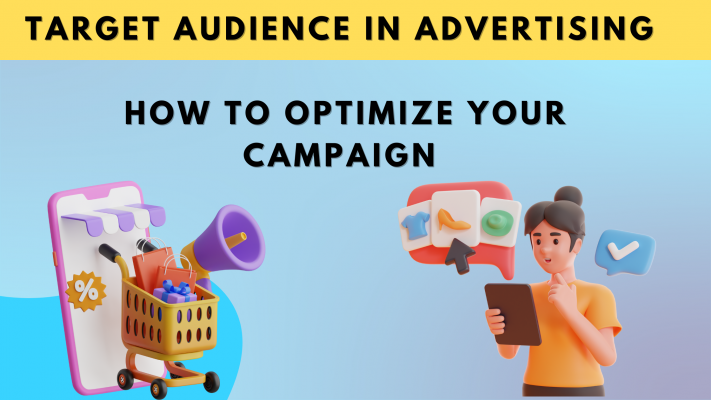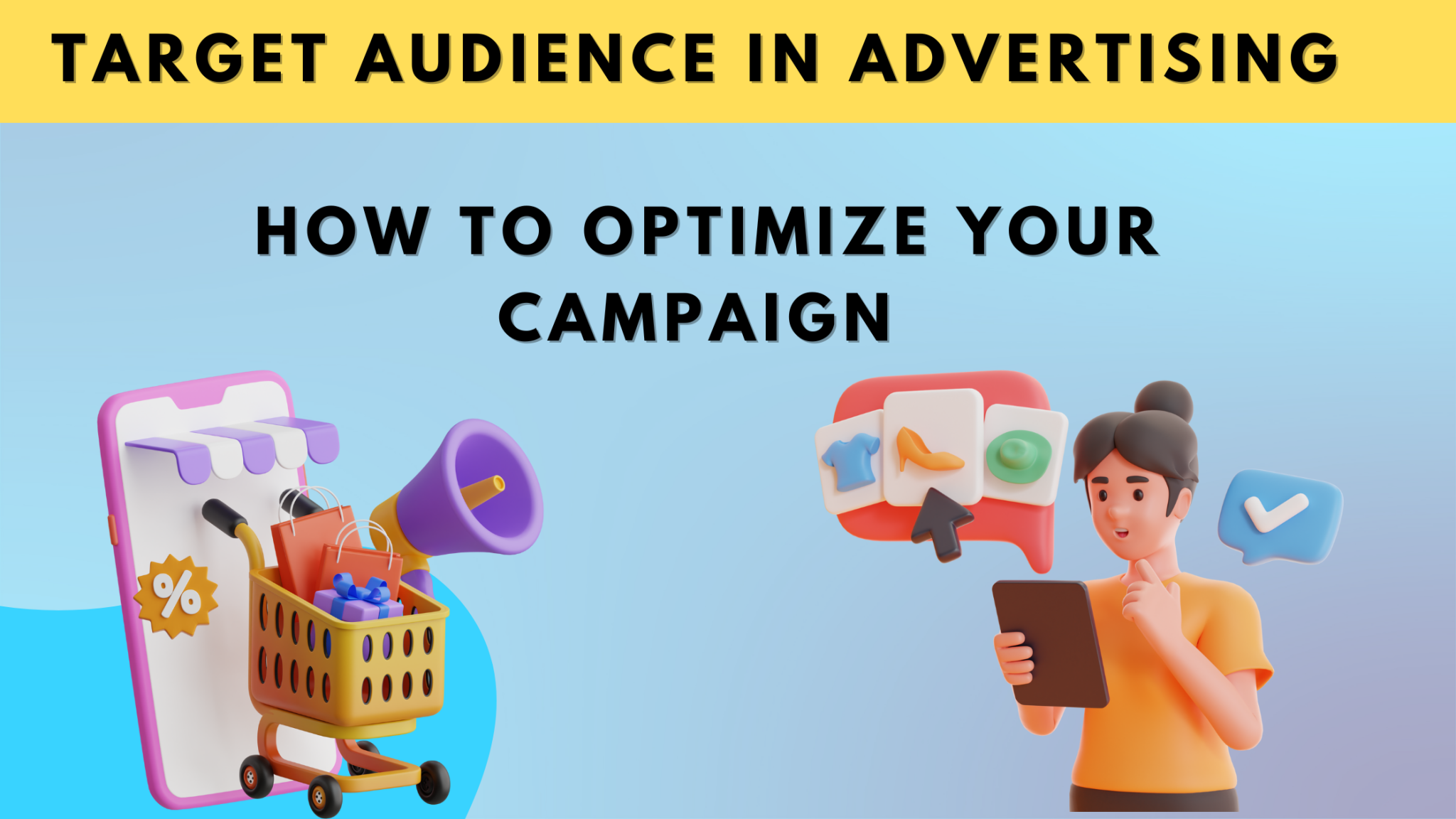
Introduction: What Does “Target Audience” Mean in Advertising?
The term target audience in advertising refers to a specific group of people that a company wants to reach with its marketing efforts.
This group is usually defined based on various characteristics such as demographics, interests, needs, and behaviors.
By identifying the target audience in advertising, advertisers can tailor their messages to resonate more effectively with the people most likely to be interested in their product or service. This focus ensures the campaign is efficient and impactful, reaching the right people through the most appropriate channels.
Why is Defining the target audience in advertising important?
Understanding your target audience is crucial for several reasons:
- Maximized Impact of Advertising Efforts: Knowing your audience allows you to create content that speaks directly to their needs and desires. This tailored approach leads to better engagement with audiences and higher conversion rates for your advertising campaign.
- Cost-Effective Campaigns: By focusing your advertising efforts on a specific audience, you avoid wasting resources on individuals who are unlikely to be interested in your product. This targeted approach helps to optimize your budget and improve your return on investment, especially when you run massive advertising campaigns on multiple channels and platforms. Understanding your target audience in advertising can save you a lot of money and target exactly to your potential clients.
- Stronger Customer Relationships: When your advertising messages are tailored to a specific group rather than the public, they are more likely to feel understood and valued by the products or services advertised. Strengthening this relationship can foster loyalty and long-term customer relationships.
Benefits of Knowing Your Target Audience in advertising
Defining a target audience brings several advantages to your advertising strategy:
- Personalization: By clearly identifying your audience, you can create personalized content that is more likely to resonate with them. Personalization can lead to more effective results and higher engagement rates.
As research from McKinsey (2021) found that “Personalization enhances performance and leads to improved customer results. Companies that experience faster growth generate 40% more of their revenue from personalization efforts compared to those with slower growth rates.”
- Higher Conversion Rates: When your ads is directed at the right people, you increase the chances of conversion. Targeted campaigns tend to perform better in terms of turning prospects into customers.
- Competitive Edge: Understanding your target audience in advertising provides a competitive advantage by allowing you to differentiate your brand from others. By catering to specific needs and preferences that competitors may overlook, you can position your brand more effectively in the market. This deeper understanding enables you to tailor your advertising efforts precisely, showcasing your brand’s superior knowledge of your audience.
How do we determine the target audience in advertising?
Advertisers often segment their audiences using four primary types—demographic, psychographic, geographic, and behavioral—or a combination of these, depending on what best aligns with their advertising objectives.
These segmentation types originated from Wendell R. Smith’s 1956 publication, “Product Differentiation and Market Segmentation as Alternative Marketing Strategies.” By employing these methods, advertisers can better tailor their strategies to meet the specific needs and preferences of their target markets. To be more specific:
- Demographic Segmentation: This type of segmentation is based on statistical characteristics such as age, gender, income, education level, and family status. It helps in understanding who your potential customers are in terms of basic, identifiable traits.
- Geographic Segmentation: Focuses on the location of your audience. This could be by country, region, city, or neighborhood. Geographic segmentation is crucial for local businesses or for campaigns targeting specific areas.
- Psychographic Segmentation: This goes beyond demographics to consider the psychological aspects of your audience, such as their lifestyle, values, and interests. Consequently, this approach gives deeper insights into customer motivations and worldviews.
- Behavioral Segmentation: This method involves segmenting audiences based on their behaviors, such as their buying habits, brand interactions, and product usage. Behavioral insights help predict future actions and tailor marketing strategies to specific customer behaviors.
Steps to Identifying Your target audience in advertising Campaigns
Here are the steps to defining your target audience effectively:
- Analyze Your Current Customers: Start by looking at who is already buying from you. Identify common characteristics and behaviors among your best customers to understand who is most interested in your product or service. This will be an ideal approach for finding the target audience for your upcoming advertising campaigns for your products/services.
- Conduct Market Research: This step normally involves using both qualitative and quantitative research methods to gain insights into your potential audience. Common approaches to market research include surveys, interviews, and focus groups,… All of which can yield valuable data about consumer needs and preferences related to your brand. However, market research can be time-consuming and costly if not done correctly. Therefore, to ensure high-quality and effective research, it’s advisable to seek support from a specialized agency with expertise in this area.
- Stay Informed on Market Trends: Keep an eye on the latest trends in your industry to see how they might affect consumer behavior. Understanding these shifts can help you adjust your targeting strategy accordingly. Some valuable resources that you can use to find the market trends such as eMarketer, Hubspot, Nielsen,….
- Develop Customer Personas: Based on your research, create detailed personas that represent your ideal customers. These personas should include demographic information, interests, and buying behaviors, providing a well-rounded picture of who you are targeting.
- Segment Your Audience: Use the data you’ve gathered to divide your audience into distinct groups. This segmentation allows you to create more specific and effective marketing messages tailored to each group.
- Test and Refine Your Approach: Once your audience is defined, test your marketing strategies to see how well they perform. Use metrics and analytics to assess effectiveness and make adjustments as needed.
Case Study: Haidilao’s Strategy to Define Its Target Audience in Vietnam
Overview: Haidilao, a renowned Chinese hotpot restaurant, effectively adapted its strategy to penetrate the Vietnamese market by understanding and targeting the right audience.

Implementation of Target Audience Strategy:
- Market Analysis: Haidilao conducted extensive research to understand Vietnamese dining culture, including preferences for communal dining and fresh ingredients. The research revealed that Vietnamese consumers value both the quality of food and the overall dining experience.
- Demographic Focus: The restaurant targeted young professionals and families in urban areas such as Hanoi and Ho Chi Minh City. These groups were identified as more likely to seek out new dining experiences and dine out frequently.
- Psychographic Segmentation: Haidilao focused on consumers who value high-quality food and a social dining experience. The restaurant emphasized its interactive dining options and premium ingredients to appeal to these preferences. In addition, many trends from Haidilao on social media platforms such as TikTok, Facebook, and YouTube. It makes people experience the FOMO effect; which makes them want to come to hotpot restaurants to experience new trends every time they launch a new promotion campaign.
- Behavioral Insights: The brand also understands customer behavioral insights very well. It recognizes the trend towards health-conscious eating and personalization in the Vietnam market. Therefore, Haidilao introduced various broth options, including healthier choices like mushroom and tomato broths. Catering to local tastes and preferences helped differentiate the brand in a competitive market.
Outcome: Haidilao’s strategy successfully attracted its target audience in Vietnam, leading to high customer loyalty and a strong market presence. As a result, the restaurant chain became a favorite for social gatherings and family meals, positioning itself as a premium dining option in the Vietnamese market.
Conclusion:
Defining your target audience in advertising activities is vital in creating successful campaigns. Understanding who your customers are and what they care about is very helpful. It can enable your ability to craft messages that resonate, optimize your marketing spend, and build stronger customer relationships.
Therefore, learning from successful brands like Haidilao can provide valuable insights into effectively defining and targeting audiences, ensuring your marketing efforts are efficient and effective.
If you want to learn more about advertising and digital marketing, check it out here!


